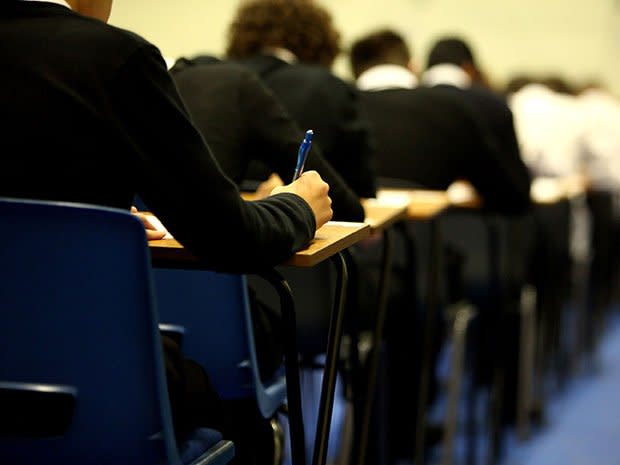Poorest students in England nine times more likely to be in inadequate secondary schools, research shows

Students from the poorest families in England are nine times more likely to attend secondary schools which are rated inadequate compared to their wealthiest peers, according to an analysis of Ofsted data conducted by the Labour Party.
As students across the country wait to receive their GCSE results on Thursday, the research also found the most deprived students were half as likely to be enrolled in an outstanding school.
By analysing Ofsted data from March, Labour found 9 per cent of deprived pupils go to a school which is rated inadequate, compared to only 1 per cent of the least deprived.
It also found the poorest pupils were half as likely to attend an outstanding school, with only 19 per cent going to one, compared to 44 per cent of the wealthiest students.
Russell Hobby, chief executive of the charity TeachFirst, said parents from low income backgrounds “often face an unequal choice when it comes to their children’s school offering what’s best for them, with many outstanding schools concentrated in wealthier areas”.
He said: “We know that teachers are doing an incredible job of supporting their pupils from day one, by sparking their creativity and imaginations. But for children from poorer backgrounds, there are still challenges that must not be ignored.
“Part of the solution will include targeted funding like the pupil premium, so it is our firm belief that this must be protected in real terms. Equally, great teaching and leadership is just as vital, so it is crucial then that government and the education sector continues to work together to ensure we attract more great teachers to areas of the greatest need.”
Last year, a report from the Fair Education Alliance found that the poorest children in Britain are more than a year behind their wealthier peers by the time they sit their GCSEs.
Angela Rayner, the shadow secretary of state for education, said: “No child should be held back from reaching their potential because of their background.
“While the Tories have gifted tax cuts to big businesses, per pupil funding has been cut in real terms. It is the most vulnerable children paying the price for the resulting crisis in our education system.
“The next Labour government will invest in a National Education Service, giving our schools the funding they need to raise standards and improve outcomes, so every child gets the education they deserve, regardless of their background.”
The government’s minister for school standards, Nick Gibb, said: “Across the country there are now more good or outstanding schools and more pupils benefiting from the excellent education they provide than in 2010, rising from 66 per cent to 86 per cent in that time.
“This includes more than half a million pupils who were typically in previously underperforming schools that have been turned around after becoming sponsored academies.
“The attainment gap between disadvantaged pupils and their more affluent peers has shrunk at various levels –14 per cent in the early years, 10 per cent at age seven and 10 per cent at GCSE level – and on A level results day last week we saw record rates of disadvantaged 18 year olds getting into university.
“We are also putting more money into our school system than ever before, and are investing £2.4bn a year specifically to help disadvantaged pupils alongside schemes like the Opportunity Areas programme which is taking action to improve opportunities for young people who need it most.”

 Yahoo News
Yahoo News 